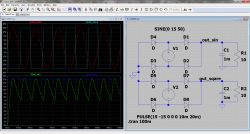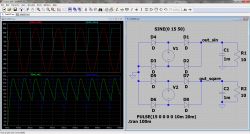In a full-bridge rectifier and RC filter, which combination of waveform, bi-polarity, and transformer-type will give the least ripple in the output (before a regulator)? Ie, how is ripple affected by:
an AC source that goes negative on the troughs, vs a source that only goes positive, never below 0v?
sine vs square source?
pulse transformer vs non-pulse transformer?
an AC source that goes negative on the troughs, vs a source that only goes positive, never below 0v?
sine vs square source?
pulse transformer vs non-pulse transformer?




